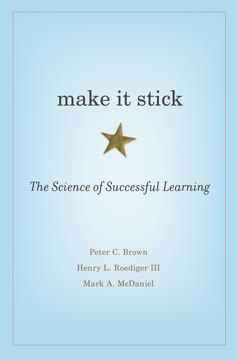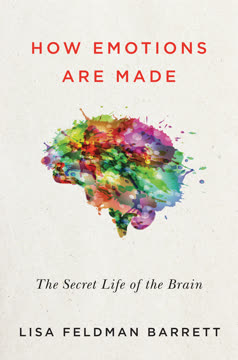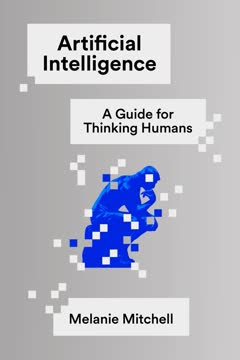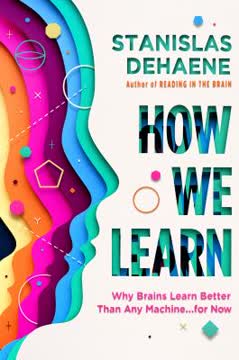重点摘要
1. 大脑天生具有内在知识,而非一张白纸
不,婴儿不是白纸:早在生命的第一年,他们就拥有关于物体、数字、概率、空间和人的广泛知识。
内在能力: 婴儿天生具有复杂的认知能力,包括:
- 物体恒常性:理解物体在视线之外仍然存在
- 数字感:能够区分小数量
- 概率推理:对可能结果的期望
- 社会认知:识别面孔和理解他人的意图
这些内在能力为未来的学习和发展奠定了基础。婴儿并非等待被填满的空容器,而是利用这些预先存在的心理框架积极与环境互动。这种内在知识使婴儿能够迅速理解周围的世界,并在早期儿童时期以惊人的速度学习。
2. 学习是一个主动的假设检验过程
学习就是形成对外部世界的内部模型。
大脑如科学家: 大脑不断生成关于世界的假设,并将其与传入的感官数据进行测试。这个过程包括:
- 预测:大脑根据其当前模型进行预测
- 观察:将预测与实际感官输入进行比较
- 错误检测:记录预测与观察之间的差异
- 模型更新:调整内部模型以更好地适应现实
当预测与现实不符时,学习就会发生,促使大脑更新其模型。这种主动的假设检验方法允许有效的学习和适应新环境。这解释了为什么单纯的被动接触通常不足以实现有效学习,以及为什么参与和主动探索至关重要。
3. 注意力、参与、错误反馈和巩固是学习的关键支柱
注意力、积极参与、错误反馈和巩固是成功学习的秘密成分。
这四个支柱构成了有效学习的基础:
-
注意力:选择性地关注相关信息
- 放大重要信号
- 过滤干扰
-
积极参与:主动处理和操控信息
- 生成假设
- 测试预测
-
错误反馈:检测和纠正错误
- 识别知识差距
- 指导改进
-
巩固:稳定和整合新知识
- 主要在睡眠期间发生
- 加强神经连接
包含这些支柱的教育策略可能比传统的被动学习方法更有效。教师和学习者应努力创造利用这些基本学习机制的环境和实践。
4. 睡眠在记忆巩固和学习中起着关键作用
每个夜晚都带回白天的记忆。
睡眠的学习功能:
- 重播白天的经历:在睡眠期间,大脑重播与最近学习相关的神经模式
- 记忆转移:信息从短期存储转移到长期存储
- 突触修剪:消除弱连接,同时加强强连接
- 洞察力生成:睡眠可以导致新的连接和解决问题的突破
睡眠对学习的重要性不可低估。它不仅是休息的时间,也是大脑处理和巩固新信息的活跃时期。这一理解对个人学习策略和教育政策都有影响,建议需要:
- 为各年龄段的学生提供充足的睡眠
- 在睡前复习重要信息以增强记忆
- 重新考虑早晨上学时间,尤其是对青少年
5. 大脑为阅读和数学等新技能回收现有电路
学习就是形成对外部世界的内部模型。
神经回收: 大脑适应现有的神经电路以支持新的文化发明,如阅读和数学。这个过程包括:
- 将视觉识别区域重新用于字母和数字识别
- 适应空间处理区域以进行数学思维
- 将这些回收区域与语言电路连接
这种回收假说解释了人类如何能够快速掌握在进化历史中不存在的复杂文化技能。它还表明学习受到大脑现有结构的限制。例如:
- 识别书写文字的视觉词形区在与语言区域良好连接的特定大脑区域中发展
- 数学思维招募最初用于空间和数量处理的电路
理解神经回收可以为教育方法提供信息,建议利用内在能力更有效地教授新技能的方法。
6. 早期儿童时期是大脑可塑性和学习的关键时期
时间越久,你记得的东西就越少。
关键时期: 大脑在早期儿童时期特别容易改变,使其成为学习的关键时期:
- 语言习得:儿童在青春期前容易学习多种语言
- 感官处理:视觉和听觉系统由早期经验塑造
- 社交技能:早期互动构成社会认知的基础
虽然学习贯穿一生,但某些技能在这些关键时期更容易获得。这一理解具有重要意义:
- 对于有发育障碍的儿童,早期干预至关重要
- 早期儿童时期丰富的刺激环境可以带来终生的好处
- 在这些时期的忽视或创伤可能产生长期的负面影响
然而,重要的是要注意大脑在一生中保留一定的可塑性,有效的学习策略可以帮助成年人获得新技能。
7. 教育应根据大脑的学习方式量身定制
教学法如同医学:是一门艺术,但应基于精确的科学知识。
基于证据的教育: 教育实践应基于我们对大脑学习方式的理解。这包括:
- 利用内在知识:建立在儿童现有的心理框架上
- 促进主动学习:鼓励探索和假设检验
- 提供及时反馈:帮助学习者快速纠正错误
- 确保充足的睡眠:认识到其在记忆巩固中的作用
有效的教育策略可能包括:
- 互动的、动手的学习体验
- 定期、低风险的测试以加强学习
- 关键概念的间隔重复
- 根据个人学习进度量身定制的教学
通过将教育实践与大脑的自然学习机制对齐,我们可以为各年龄段的学生创造更有效和更具吸引力的学习体验。
8. 社会互动和共享注意力对人类学习至关重要
智人是一种社会动物,其大脑具有“自然教学法”的电路,一旦我们关注他人试图教给我们的东西,这些电路就会被触发。
社会学习: 人类特别适合从他人那里学习:
- 共享注意力:婴儿自然地跟随他人的目光和指点
- 模仿:儿童容易复制他们观察到的动作和行为
- 文化传递:复杂的知识通过几代人传递
这种学习的社会方面是人类认知发展和文化进化的关键因素。它允许:
- 快速习得语言和社会规范
- 知识在几代人之间的积累和传递
- 协作解决问题和创新
教育方法应利用这种学习的社会性质,通过:
- 鼓励同伴学习和小组讨论
- 利用教师演示和指导练习
- 创造文化和跨代学习的机会
9. 好奇心和主动探索推动高效学习
学习就是消除。
好奇心驱动的学习: 大脑自然受到寻找新信息和体验的激励:
- 多巴胺奖励:新信息激活大脑的奖励电路
- 最佳挑战:我们对既不太简单也不太复杂的事物最感兴趣
- 主动探索:自我导向的探索比被动接受更有效
这种对知识的内在驱动力可以在教育环境中加以利用,通过:
- 允许学生追求他们的兴趣
- 以激发好奇心的方式呈现信息
- 创造鼓励探索和发现的环境
- 提出引人入胜的问题或问题以激发探究
通过利用学习者的自然好奇心,教育者可以提高参与度并改善学习成果。
10. 错误反馈而非惩罚对改进至关重要
错误因此成为学习的必要条件。
富有成效的错误: 错误是学习过程中的关键部分,而不是应该避免或惩罚的东西:
- 错误信号:预测与现实之间的差异推动学习
- 具体反馈:关于错误的详细信息有助于学习者改进
- 成长心态:将错误视为成长机会可以增强韧性
有效的错误反馈应:
- 及时且具体
- 关注任务而非个人
- 提供明确的改进指导
教育实践应创造安全的环境,让学习者感到舒适地犯错并从中学习。这种方法可以:
- 减少与学习相关的焦虑
- 鼓励冒险和创造力
- 培养对学习的热爱和面对挑战的韧性
11. 间隔学习和自我测试增强记忆
你测试自己的次数越多,你记住的东西就越多。
有效的学习策略:
- 间隔重复:在增加的间隔内复习信息可以改善长期记忆
- 提取练习:主动回忆信息比被动复习更能加强记忆
- 交错学习:混合不同主题或类型的问题可以增强学习和迁移
这些基于证据的技术利用大脑巩固和提取记忆的方式:
- 间隔允许时间进行依赖于睡眠的记忆巩固
- 提取练习加强与信息相关的神经通路
- 交错学习帮助大脑区分相似概念并灵活应用知识
实际应用包括:
- 使用闪卡在增加的间隔内进行复习
- 在教育环境中进行定期低风险测验
- 在作业和练习中混合不同类型的问题
通过将学习实践与大脑的学习和记忆方式对齐,我们可以显著提高学习的效率和效果。
最后更新日期:
FAQ
What's How We Learn about?
- Exploration of Learning Mechanisms: The book examines how the human brain processes information and adapts over time, contrasting human learning with machine learning.
- Neuroscience and Education: Stanislas Dehaene integrates neuroscience findings with educational practices to improve teaching methods.
- Four Pillars of Learning: It identifies attention, active engagement, error feedback, and consolidation as essential mechanisms for enhancing learning.
Why should I read How We Learn?
- Understanding Learning Processes: Gain insights into how learning occurs in the brain, which can improve personal and educational outcomes.
- Practical Applications: Offers advice for educators and parents on fostering effective learning environments.
- Scientific Basis: The book is grounded in recent scientific research, providing credible and enlightening content.
What are the key takeaways of How We Learn?
- Active Learning: Learning requires active engagement and curiosity, essential for forming strong neural connections.
- Attention's Role: Attention is crucial for amplifying relevant information and filtering distractions, enhancing educational practices.
- Neuroplasticity: The brain's ability to reorganize itself based on experiences is central to acquiring new skills and knowledge.
What are the best quotes from How We Learn and what do they mean?
- “If we don’t know how we learn, how on earth do we know how to teach?”: Highlights the importance of understanding learning processes to improve teaching methods.
- “Learning is the triumph of our species.”: Reflects the unique human capacity to learn and adapt, emphasizing its evolutionary significance.
- “Neurons that fire together, wire together.”: Describes synaptic plasticity, where simultaneous neuron activation strengthens connections, crucial for learning and memory.
What are the four pillars of learning mentioned in How We Learn?
- Attention: Focuses on relevant information while filtering distractions, essential for effective learning.
- Active Engagement: Involves active participation, fostering curiosity and deeper understanding.
- Error Feedback: Crucial for refining knowledge and correcting misconceptions through real-world experiences.
- Consolidation: Stabilizes and integrates new information into long-term memory, with sleep playing a vital role.
How does How We Learn explain the difference between human learning and machine learning?
- Contextual Learning: Human learning involves understanding abstract concepts, unlike machines that rely on surface-level data.
- Neuroplasticity vs. Fixed Algorithms: The human brain adapts and reorganizes based on experiences, while machines follow fixed algorithms.
- Probabilistic Reasoning: Humans make inferences and predictions with limited data, whereas machines need vast amounts of data.
What role does attention play in learning according to How We Learn?
- Amplification of Information: Acts as a spotlight, enhancing relevant information processing and memory retention.
- Selective Filtering: Filters out irrelevant stimuli, focusing on pertinent information.
- Impact on Neural Activity: Increases neuron firing rates, strengthening synaptic connections for lasting memories.
How does How We Learn address the concept of neuroplasticity?
- Foundation of Learning: Neuroplasticity allows the brain to reorganize itself in response to learning experiences.
- Synaptic Changes: Learning involves strengthening or weakening synaptic connections based on activity.
- Limits of Plasticity: While powerful, neuroplasticity diminishes with age, making early learning intervention critical.
What is the significance of error feedback in the learning process as described in How We Learn?
- Correction of Misconceptions: Allows learners to identify and correct mistakes, refining understanding.
- Motivation to Improve: Feedback on errors motivates persistence and skill improvement.
- Strengthening Neural Connections: Adjusts synaptic connections to align with correct information, crucial for retention.
How does How We Learn suggest we can optimize learning environments?
- Create Engaging Experiences: Foster curiosity and active engagement to enhance learning.
- Utilize Feedback Mechanisms: Incorporate constructive error feedback to help learners adjust understanding.
- Encourage Attention Management: Focus on strategies to manage attention effectively, reducing distractions.
How does How We Learn address the importance of sleep?
- Memory Consolidation: Sleep plays a crucial role in consolidating memories formed during the day.
- Optimal Learning: Adequate sleep enhances learning efficiency and retention.
- Sleep and Development: Essential for cognitive development, especially in children.
What educational strategies does How We Learn recommend?
- Structured Learning Environments: Advocates for curricula that guide students through progressively challenging material.
- Encouraging Curiosity: Foster curiosity to enhance engagement and exploration.
- Feedback Mechanisms: Implement effective feedback to help students learn from mistakes, promoting growth.
评论
我们如何学习探讨了学习的神经科学,比较了人类与机器的学习过程。德哈内提出了学习的四大支柱:注意力、主动参与、错误反馈和巩固。该书揭穿了学习神话,并提供了基于证据的有效教育策略。读者们欣赏其对大脑功能、儿童发展以及教学和学习的实际应用的深刻见解。尽管有些部分对读者来说较具挑战性,但大多数评论者称赞了本书的清晰性和对教育工作者、家长以及终身学习者的相关性。许多人认为这是理解大脑如何获取知识的必读之作。
Similar Books














